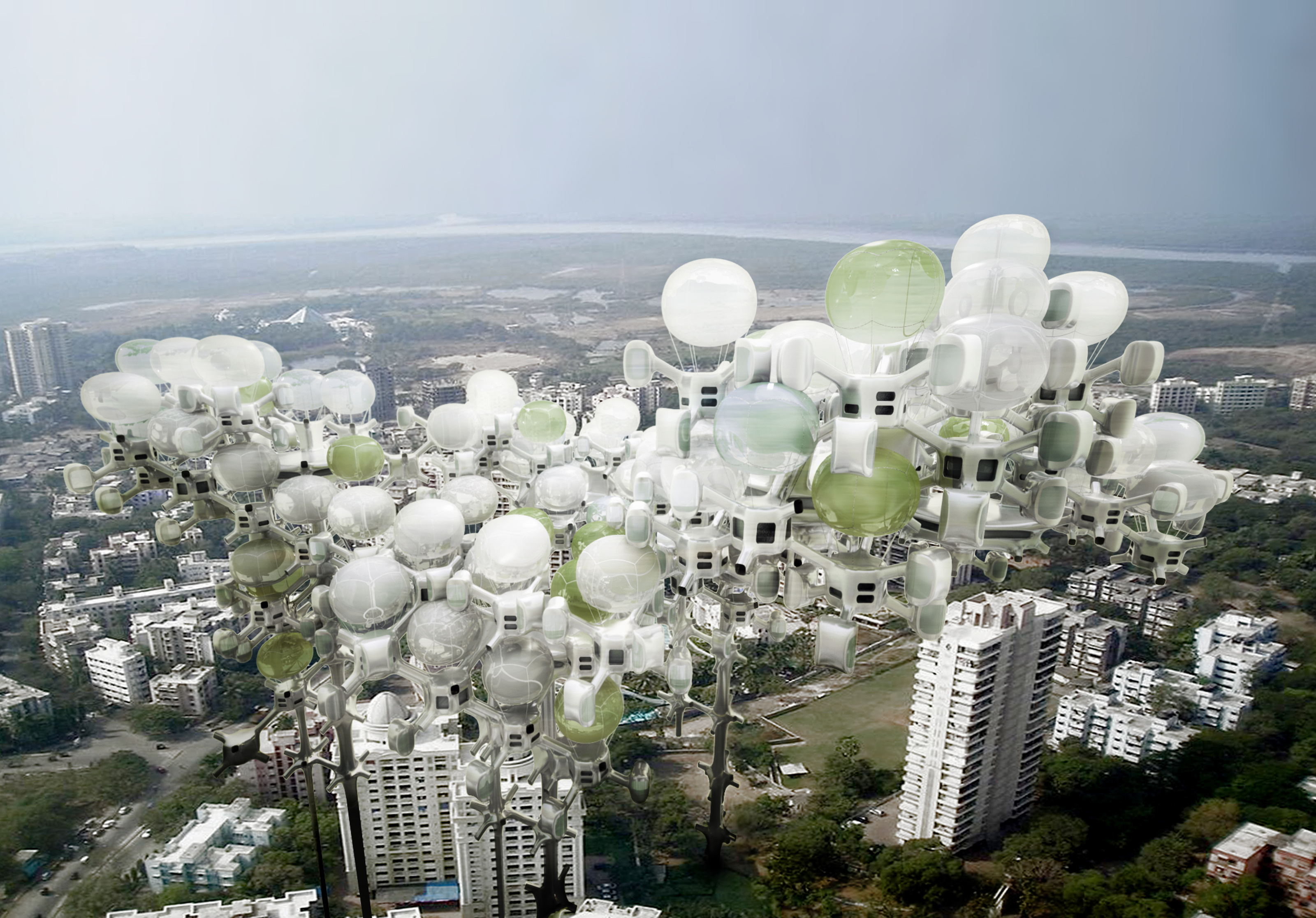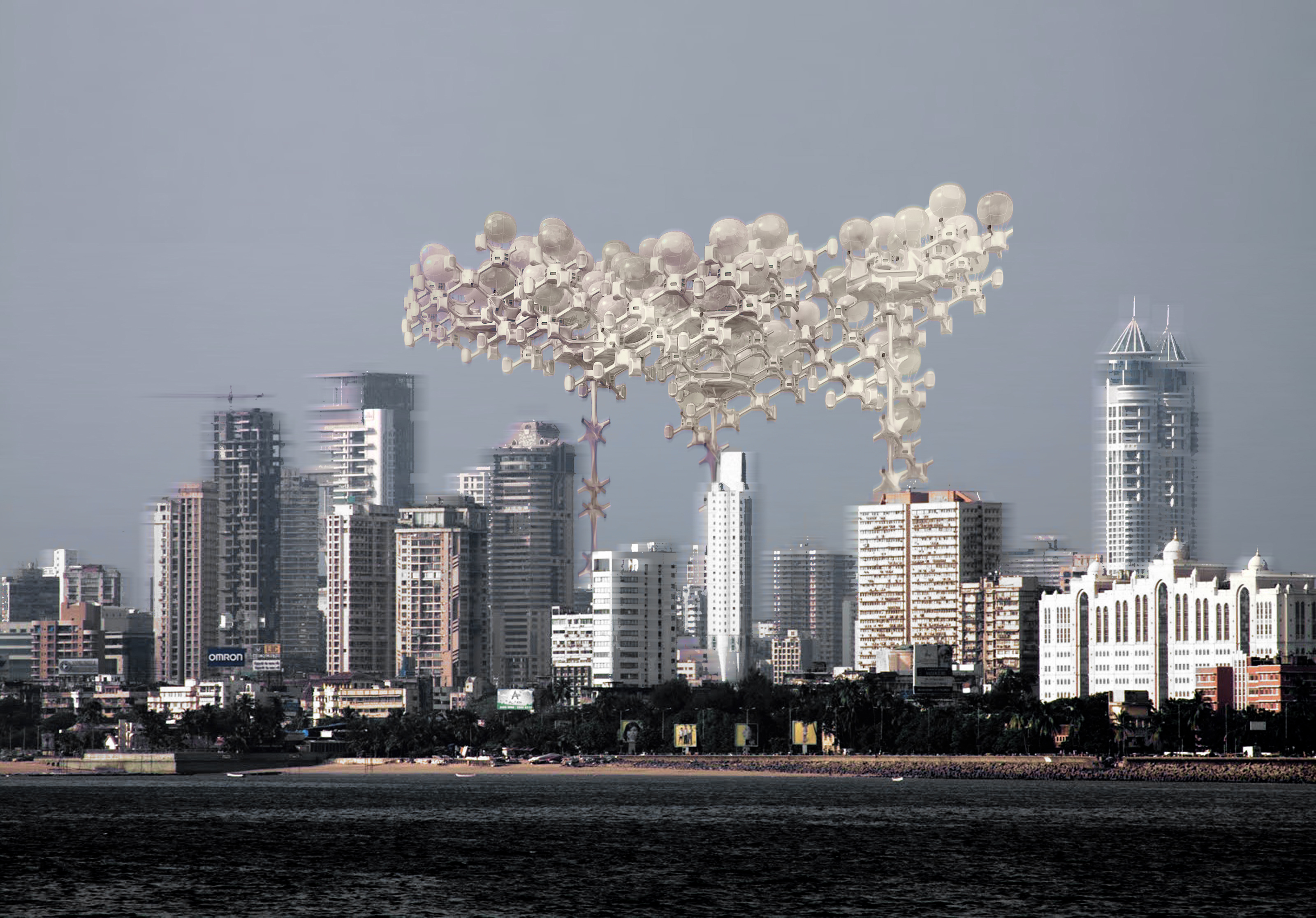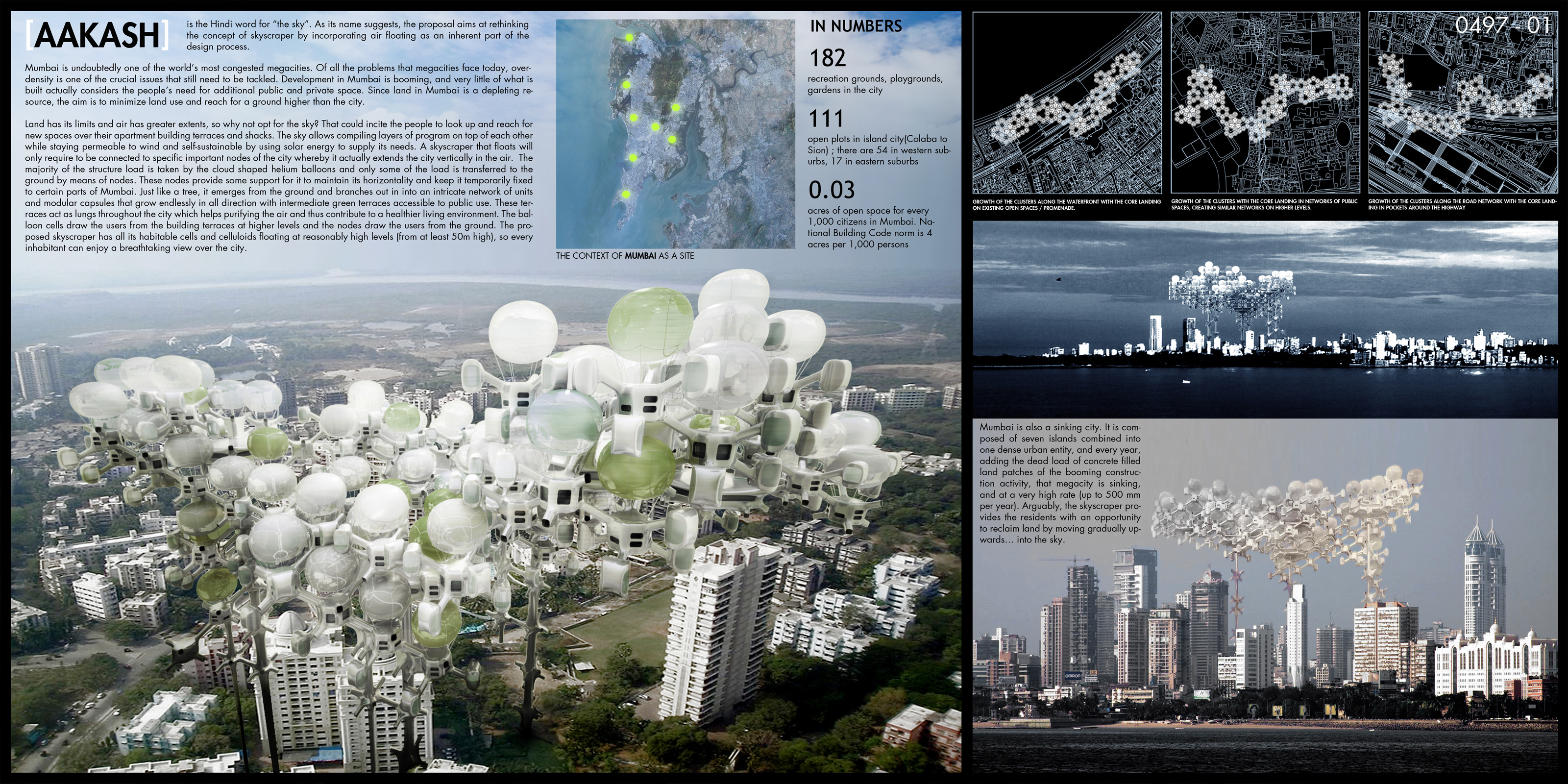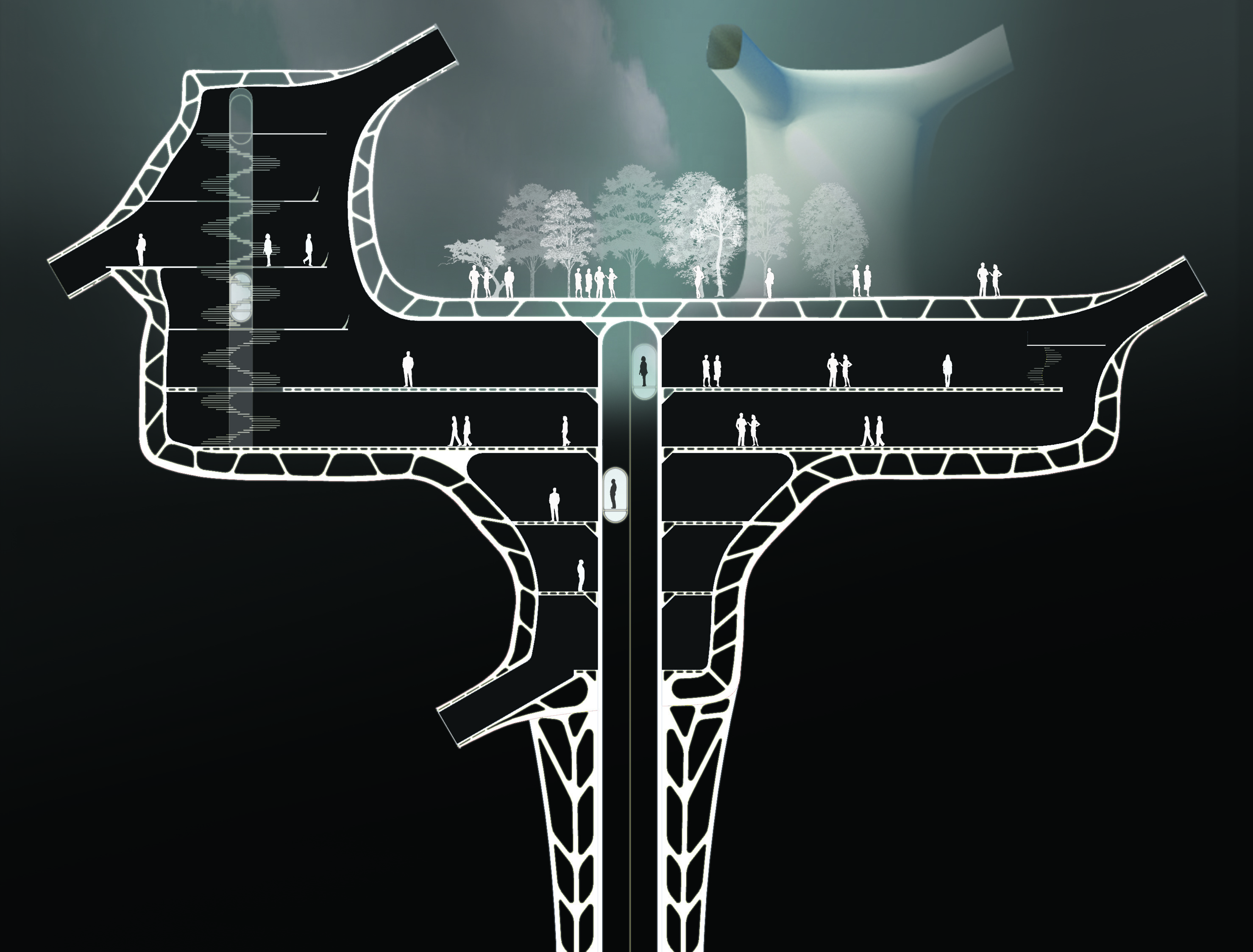The 2012 online eVolo Skyscraper Competition awarded an honorable mention to Chehab's entry entitled "Aakash". The entry was submitted by Chehab and two of his AA classmates from the EmTech course, Suraj Suthar and Swapnil Gawande.
Aakash, the Hindi word for “sky,” provides the inspiration for this project, which proposes locating floating clusters of development high in the skies above Mumbai, one of the world’s most congested metropolises.





The complex as a whole is comprised of tree-like structures that stem at nodes throughout the city, grow into the sky and then branch out into wide, floating modules that connect to create a road-less cityscape. The majority of the structural load is taken by cloud-shaped helium balloons; only some of the load is transferred to the ground by means of nodes.

In the canopy of this structure, an intricate network of units and modular capsules grow endlessly in all directions, with intermediate green terraces accessible to public use. The terraces act as lungs throughout the city to purify the air in congested Mumbai. The habitable cells, which are two-story “celluloids,” are held by the helium balloons and float at reasonably high levels (at least 50 meters high) so that every inhabitant can enjoy a breath-taking view over the city.
The balloon cells draw the users from the building terraces at higher levels and the nodes draw the users from the ground. The geometric celluloids are clustered around large, circular communal cells. These connections provide further bracing for the structure.
The outer skins of the helium balloons are covered in photo-voltaic cells to make the structure energetically self-sustaining with solar power. The structure can grow along well-traversed routes: along the waterfront, along major roadways, or clustered around well-used public spaces.
The balloon cells draw the users from the building terraces at higher levels and the nodes draw the users from the ground. The geometric celluloids are clustered around large, circular communal cells. These connections provide further bracing for the structure.
The outer skins of the helium balloons are covered in photo-voltaic cells to make the structure energetically self-sustaining with solar power. The structure can grow along well-traversed routes: along the waterfront, along major roadways, or clustered around well-used public spaces.

Credits:
Suraj Suthar, Swapnil Gawande
Vertical High Density
Online Competition2012